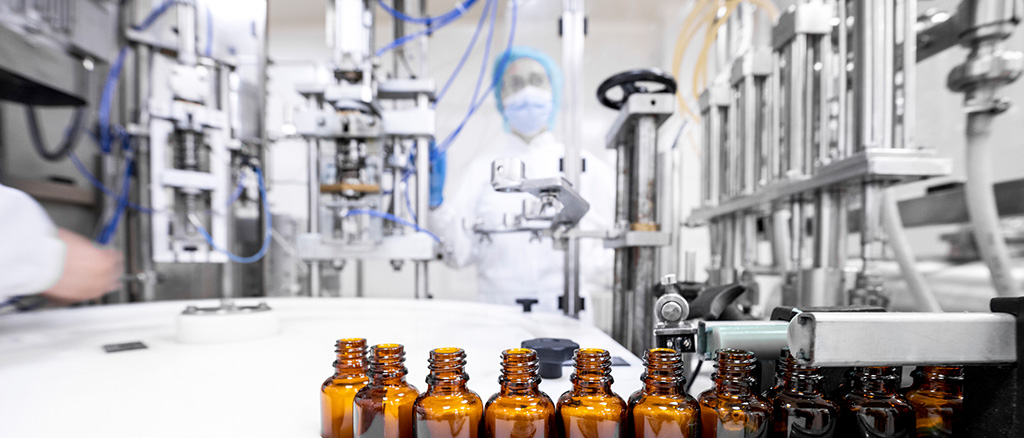Pharmaceutical Manufacturing

Check out our free Buyer’s Guide and learn how low or fluctuating humidity can negatively affect pharmaceutical manufacturing facilities.
As the competitive landscape changes, manufacturers of pharmaceutical drugs are looking for ways to increase productivity and eliminate waste to meet the demands of consumers. Through a customized solution specific to a manufacturer’s needs, better control of relative humidity can create an additional layer of protection to protect product integrity, lower the risk of contamination, decrease the cost of production, and minimize waste.
As DriSteem humidifiers have been installed within manufacturing facilities around the globe, including some currently producing the vaccination for SARS-CoV-2, you can trust these systems to offer the protection you need.
Critical environmental parameters, including temperature, humidity, room pressurization, air change rates, and operating particle counts, must be carefully considered. Optimal levels and tolerances may vary by room in a pharmaceutical manufacturing facility, and separation between rooms must be planned in accordance with those requirements. Some processes require a dedicated or redundant HVAC system in order to preserve appropriate room conditions.
When humidity levels are lower than 45%, a manufacturer may experience static buildup, which can cause medicine to dry out and become brittle. There may also be issues during tablet pressing and packaging stage, as excessive static causes medicine to stick together. Too much humidity creates an ideal environment for viruses, bacteria, and mold to grow, compromising the integrity of the pharmaceutical drug. It is recommended pharmaceutical manufacturers maintain the RH between 35 and 60 percent within their facility by the ASHRAE Handbook.
Issues caused by low or fluctuating relative humidity
Product Integrity
As recently reported by the American Medical Association (AMA), prescription drug shortage remains a concern. Relative humidity can create an additional layer of protection to protect product integrity. Humidifying facilities to proper levels will help reduce waste, improve throughput, and maximize up-time for production.
Competitive Landscape
Due to the increase in generic drugs, manufacturers of pharmaceutical drugs have had to streamline processes and shorten the testing phase in order to stay competitive.
Resources
Buyers Guide: Humidification for Pharmaceutical Manufacturing
Learn more about how issues caused by low or fluctuating humidity levels can negatively affect a pharmaceutical manufacturing facility, creating the potential for inaccurate results and reducing the life span of expensive equipment.
Next steps
Contact your local DriSteem representative to learn more about humidity control for pharmaceutical manufacturing. Use the Find a Rep tool below to find your nearest representative.
Connect with a humidity control expert
Already using humidity control to protect pharmaceutical manufacturing facilities?
For best performance and highest efficiency, existing humidification systems should be checked to determine if any replacement parts are needed, if any other maintenance needs to be performed, and whether there is a software update available. Contact your local DriSteem representative to learn more.
